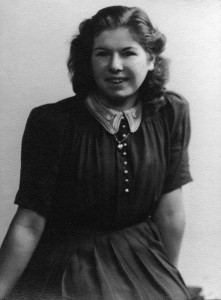If someone in the pub tells you a story about their past, do you believe it wholly or do you think it might have been embellished a little to make it a cracking good yarn? It probably depends on who is telling you the story and how far-fetched it seems to you, given your experience. Normally, it does not matter. You can take it or leave it. However, when you come to interview someone about their past, particularly their childhood, for an article or a book, can you be sure you are hearing the whole truth? The short answer is, you cannot. Yet oral history is a discipline and, when well used, can add fascinating detail and vivid colour to a story. So how, as a writer, do I work out whether someone is embellishing their story to make it seem more interesting, or fabricating it entirely?
How about I turn it on its head and say: why do I think this person is embellishing their story? Is it for me or is it for them? Did they have a bad experience and wish to put a positive gloss on it or are they trying to hit back at someone else? Are they simply trying to make themselves sound more interesting? Is it something that happened to them in childhood they remember clearly or something they have been told about so often it has become part of their narrative? Is this story coloured by collective memory, that common history that we all dip into? It could be a combination of all those things and I have to make up my mind as I am listening to them what is going on.
For me it was important from the outset of my writing to decide how I was going to use oral history. I used it, and still use it, to add a personal touch, a whiff of a smell, a dash of colour to a narrative or lend credibility to a well-known fact. A fellow author once gave me an excellent piece of advice when I was writing about the Thailand Burma Railway (Bridge on the River Kwai territory). ‘Never believe any story that you hear about atrocities on the railway or in the camps unless it is corroborated by at least one other piece of reliable evidence. Almost everything on that railway was recorded, either by the Allies or the Japanese.’ A sound piece of advice. So many books have been written about the railway that even those with the clearest recollection necessarily picked up bits and bobs of collective memory. It does not mean that there are not individual stories that are valid. There are. But you have to look for them. Learn to hear them.
When I was researching and writing Jambusters I had far fewer problems with collective memory embellishments than I did with The Colonel of Tamarkan, about the Bridge on the River Kwai, or When the Children Came Home. The former dealt with well trodden territory and the latter book dealt with people’s childhood, which is the part of our past that gets calcified as we go through adolescence and a narrative is created to make sense of our adult lives. In Jambusters my problem came when I was using reported material that was sexed up for propaganda. What was Lady Denman’s real agenda when she broadcast to the WI in 1942? She was speaking to the nation, a platform bigger than any she would have had at an AGM, and she exploited it. Could I really believe the story about the three women who dug up a whole allotment of dry, clay soil and grew a crop of potatoes that were better than any of those grown by the men? Embellishment, certainly, but why not? After all, there was a war on. So I used the material with care.
I have developed a few ground rules when using oral history about the Second World War. If a story involves an event tied to a date in the war, such as an Atlantic crossing or a court case for overselling eggs, I cross check it against other things that happened on that date in newspapers, books, on the internet. If someone tells me a story that I am wary of but swears blind it is true, I put it in the book as a direct quote in order to let my readers make up their minds. If someone tells me something I doubt or directly disbelieve, I leave it out. It is not worth undermining the integrity of other oral history.

But it is not just about pitfalls, the joys of oral history are clear. Personal stories are wonderfully colourful and they add to an historical account. Some are funny, such as the recollection of one lady who, seeing the evacuees from East London, was thrilled to overhear them shouting with joy in an orchard ‘look! Apples! The real fing. On trees, not on barrers!’ Others are deeply moving, and a few are so unbelievable as to be wholly believable. One of my favourites from Jambusters was the story of a WI in Lincolnshire who had collected together so many tin cans for the salvage scheme that they rang the local council to ask them to send round a steam roller to flatten the cans for ease of storage and transport. You just couldn’t make that up. Could you?

